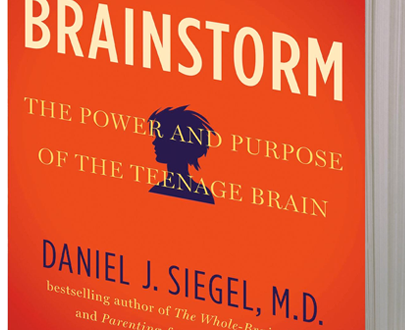 Brains undergo a massive reorganization between the ages of 12 and 25. While the brain has already reached 90 percent of its full size by the time a person is six, the period of adolescence is a time of extensive remodeling. One analogy is that adolescents go through a network and wiring upgrade. Author and Psychologist Daniel Seigel[1] suggests that adults need to learn about these changes to support adolescents with empathy and compassion.
Brains undergo a massive reorganization between the ages of 12 and 25. While the brain has already reached 90 percent of its full size by the time a person is six, the period of adolescence is a time of extensive remodeling. One analogy is that adolescents go through a network and wiring upgrade. Author and Psychologist Daniel Seigel[1] suggests that adults need to learn about these changes to support adolescents with empathy and compassion.
Book Summary
Brainstorm: The Power and Purpose of the Teenage Brain
An Inside-Out Guide to The Emerging Adolescent Mind, Ages 12 - 24 (2014)
Between the ages of 12 and 24, the brain changes in important, and oftentimes maddening, ways. It's no wonder that many parents and educators approach adolescents with fear and trepidation. According to renowned neuropsychiatrist Daniel Siegel, however, if parents and teens can work together to form a deeper understanding of the brain science behind all the tumult, they will be able to turn conflict into connection and form a deeper understanding of one another.
In Brainstorm, Dr. Siegel illuminates how brain development impacts teenagers' behavior and relationships. Drawing on important new research in the field of interpersonal neurobiology, he explores exciting ways in which understanding how the teenage brain functions can help parents and educators make what is in fact an incredibly positive period of growth, change, and experimentation in their children's lives less lonely and distressing on both sides of the generational divide.
Questions & Topics for Discussion
1. What was your key takeaway?
2. During adolescence, brain changes increase the need for “ESSENCE.” Siegel argues that there are both positive and negative outcomes to these changes depending on the choices an adolescent makes. How do we, as adults, provide young people with the opportunities to express and experience this ESSENCE in a positive way?
ES - Emotional Spark
SE - Social Engagement
N - Novelty Seeking
CE - Creative Exploration
3. Adolescence can be the time when teens need adults the most but when they may also isolate themselves from adults as they connect more to peers. How can we foster positive connections with adults?
4. “Support” means finding an outlet for teens to "engage and explore ways to push at life's boundaries" in a manner that is both positive and essential to growing up. What are healthy ways of pushing boundaries?
6. Siegel lists a number of Mindsight tools that are designed to "strengthen your mind, make your brain more flexible and resilient, and improve your relationships." Which of the mindsight tools resonated with you the most? In what ways can we use these mindsight tools into homes, classrooms and neighbourhoods?
-
Mindsight Tool #1 - Seeing & Shaping the Sea Inside
-
Mindsight Tool #2 - Time In
-
Mindsight Tool #3 - Time Between and Reflective Conversations
-
Mindsight Tool #4 - The Mindsight Simple Seven
7. Siegel argues that adults have a lot to learn from adolescents.
-
Share a story when you learned something significant from an adolescent.
-
How can what we learn from young people further enrich our own lives?
Video Extra
Book Club Guide adapted from Marna Macmillan, Learning Support Coordinator & Pam Becker, Vice Principal SD 43 (Coquitlam), British Columbia
Daniel J. Siegel received his medical degree from Harvard University and completed his postgraduate medical education at UCLA with training in pediatrics and child, adolescent and adult psychiatry. He served as a National Institute of Mental Health Research Fellow at UCLA, studying family interactions with an emphasis on how attachment experiences influence emotions, behavior, autobiographical memory and narrative.